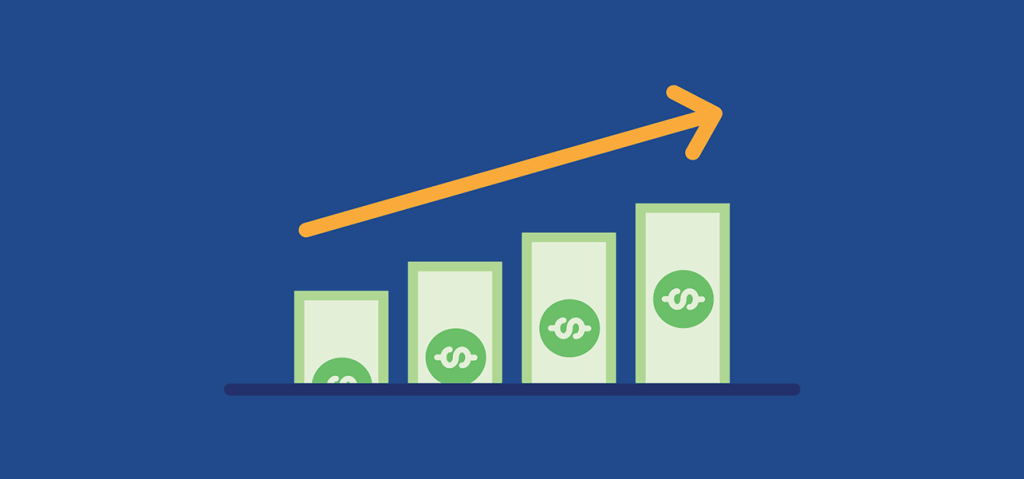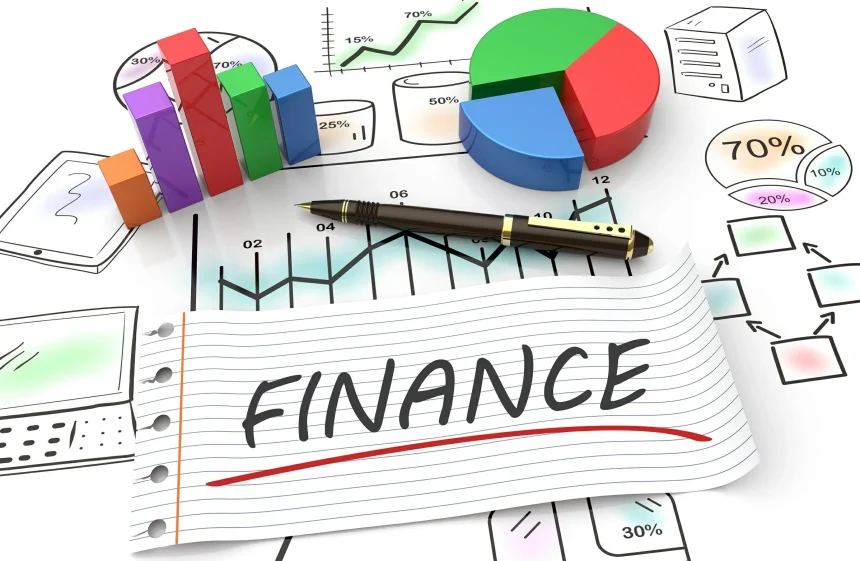Hey there! Let’s talk about something that might sound a little funny at first: financial finances. Yep, it’s a bit like saying “money money,” but stick with me here. “Financial finances” is just a playful way to emphasize that we’re getting into the nitty-gritty of managing your money—because, let’s face it, finances can feel like a maze sometimes. One wrong turn, and you’re lost in a sea of bills, debt, and “Where did my paycheck go?” moments.
If you’ve ever felt confused, overwhelmed, or even a little scared about money management, you’re not alone. Most people feel that way at some point. Maybe you’ve wondered how you’re supposed to save for the future when you’re barely making it through the month. Or maybe you’ve got big dreams—like buying a house or retiring early—but no clue where to start. The good news? It doesn’t have to be that complicated. There are five key financial strategies that can turn things around for you. These aren’t just random tips; they’re the foundation of smart money management.
Whether you’re new to this or already on your financial journey, mastering these will give you the clarity and control you’ve been looking for.
So, what are these game-changing strategies? Here they are:
- Master the Art of Budgeting
- Build and Protect Your Emergency Fund
- Pay Off Debt the Smart Way
- Start Investing Early—Even If It’s Just $50 a Month
- Set Realistic, Time-Based Financial Goals
Ready to take charge of your financial future? Let’s break it down.
Strategy #1: Master the Art of Budgeting
First up: budgeting. Before you groan and think, “Budgets are so boring,” hear me out. Budgeting isn’t about cutting out all the fun stuff in life. It’s not about saying no to coffee or Netflix. It’s about awareness—knowing where your money’s going so you can make sure it’s working for you, not against you.

Picture this: your money’s like water in a bucket. Without a plan, it just spills out everywhere—$5 here, $20 there—and soon, the bucket’s empty. A budget is like putting a lid on that bucket and deciding where the water flows. It’s empowering, not restrictive.
Simple Budgeting Methods to Get Started
You don’t need to be a math genius to budget. Here are two easy methods anyone can try:
- The 50/30/20 Rule: This one’s a classic. Split your after-tax income like this: 50% for needs (rent, groceries, utilities), 30% for wants (dining out, hobbies), and 20% for savings or debt repayment. It’s simple and gives you room to enjoy life while still building wealth.
- Zero-Based Budgeting: Here, every dollar you earn gets a job. Rent? Covered. Groceries? Check. Savings? Yup. By the end of the month, your income minus expenses equals zero—not because you spent it all, but because you planned it all. It’s perfect if you like being hands-on.
Tools to Make It Easier
No need to track everything with a pencil and paper (unless you’re into that!). Here are some tools to simplify things:
- YNAB (You Need a Budget): An app that’s like a budgeting coach, helping you plan and stay on track.
- Mint: Free and automatic—tracks your spending and shows you where your money’s going.
- Spreadsheets: Grab a Google Sheet, plug in your numbers, and customize it however you like.
Start small. Even a basic budget can save you hundreds a year by cutting out little leaks you didn’t notice.
Strategy #2: Build and Protect Your Emergency Fund
Life loves throwing curveballs—car repairs, medical bills, or a sudden job loss. That’s why an emergency fund is a must. It’s your financial safety net, there to catch you when things get shaky.

Why 3–6 Months of Expenses Matter
The golden rule is to save 3–6 months’ worth of living expenses. Why? Because it gives you breathing room. If your job disappears, you’ve got time to figure things out without stressing about rent. If your fridge dies, you can replace it without maxing out a credit card.
Don’t panic if that number feels huge—it does for most people! The trick is to start small. Even $500 can cover a lot of unexpected hiccups.
How to Build It Gradually
You don’t need a windfall to get going. Here’s how:
- Set a Mini Goal: Aim for $1,000 first. Once you hit that, go for one month’s expenses, then two, and keep building.
- Automate It: Set up a small transfer—like $25—every payday to your emergency fund. Out of sight, out of mind.
- Use Extra Cash: Tax refund? Birthday money? Tuck some of it away here.
Where to Keep Your Emergency Fund
This money needs to be safe and easy to grab, but not too easy. Skip the checking account (too tempting) and try these:
- High-Yield Savings Accounts (HYSA): Better interest rates than regular savings, so your money grows a little while it sits.
- Money Market Accounts: Similar to an HYSA, sometimes with check-writing options for emergencies.
An emergency fund isn’t sexy, but it’s peace of mind you can’t put a price on.
Strategy #3: Pay Off Debt the Smart Way
Debt. It’s a word that can feel heavy, right? But not all debt is the same. There’s high-interest debt—like credit cards—that can drag you down, and “good” debt—like a mortgage—that can actually help you grow. The trick is knowing how to tackle it.

High-Interest Debt vs. Good Debt
- High-Interest Debt: Think credit cards with 20%+ rates or payday loans. These are the ones to attack first—they’re expensive and grow fast.
- Good Debt: A mortgage or student loan with a low rate can build equity or boost your income over time. Manage these, don’t rush to pay them off.
Focus on the bad stuff first—it’s costing you the most.
Snowball vs. Avalanche: Pick Your Plan
Two popular ways to pay off debt:
- Snowball Method: Start with your smallest debt, pay it off, then roll that payment into the next one. It’s about quick wins to keep you motivated.
- Avalanche Method: Target the highest-interest debt first. It saves you more money long-term but takes patience.
Love checking things off a list? Go snowball. Want to save on interest? Avalanche is your pick.
Avoiding Traps and Managing Loans
- Credit Cards: Pay the full balance monthly to dodge interest. Keep usage under 30% of your limit for a better credit score improvement.
- Student Loans: Check out income-driven repayment plans or refinance if you can snag a lower rate.
Paying off debt isn’t punishment—it’s freedom.
Strategy #4: Start Investing Early—Even If It’s Just $50 a Month
Investing might sound like something for rich folks in suits, but it’s not. It’s for you, me, anyone with a few bucks and a little patience. And the earlier you start, the better.

The Magic of Compound Interest
Here’s why time matters: compound interest. It’s when your money earns money, and then that money earns more money. Start with $50 a month at age 25, with a 7% average return, and by 65, you’ve got over $100,000. Wait until 35? That drops to about $50,000. Time is your superpower.
Easy Investments for Beginners
Don’t know where to start? Try these:
- Index Funds: They track big markets like the S&P 500. Low fees, low risk, big growth over time.
- ETFs: Like index funds but trade like stocks. Simple and beginner-friendly.
Smart Accounts to Use
Make your money work harder with these:
- Roth IRA: Pay taxes now, enjoy tax-free growth and withdrawals later.
- 401(k): If your job offers a match, take it—it’s free cash.
Long-Term Wins, Not Quick Guesses
Don’t try to “time” the market—it’s a gamble even pros lose. Invest regularly, ignore the dips, and let time do the heavy lifting.
Strategy #5: Set Realistic, Time-Based Financial Goals
Without goals, your money’s just floating around. With them, you’ve got direction. Want a house? Early retirement? A dream trip? Let’s make it happen.

The SMART Way
Use the SMART framework:
- Specific: “Save $10,000 for a house down payment.”
- Measurable: “Put away $500 a month.”
- Achievable: Realistic for your income.
- Relevant: Matches your dreams.
- Time-Based: “In two years.”
Goal Ideas
- Short-Term: $1,000 emergency fund in six months.
- Medium-Term: Pay off $5,000 debt in a year.
- Long-Term: $500,000 for retirement savings by 60.
Stay on Track
- Habit Stacking: Save after every coffee run.
- Accountability: Tell a friend your goal.
- Automation: Set up auto-transfers.
Goals turn dreams into plans.
Your Financial Future Starts with One Small Step
Here’s the truth: it’s never too late to get your finances on track. You don’t need to be rich or a money expert. These five personal finance tips—budgeting, emergency funds, debt payoff, investing, and goal-setting—are for everyone. Start at 20, 40, or 60. Start with $10 or $1,000. It all works.
Don’t try to do everything at once—pick one strategy. Maybe set up a budget this weekend or open an HYSA tomorrow. One step today leads to big wins tomorrow.
Need a boost? Grab our free budgeting template or starter investment guide. You’ve got this!



